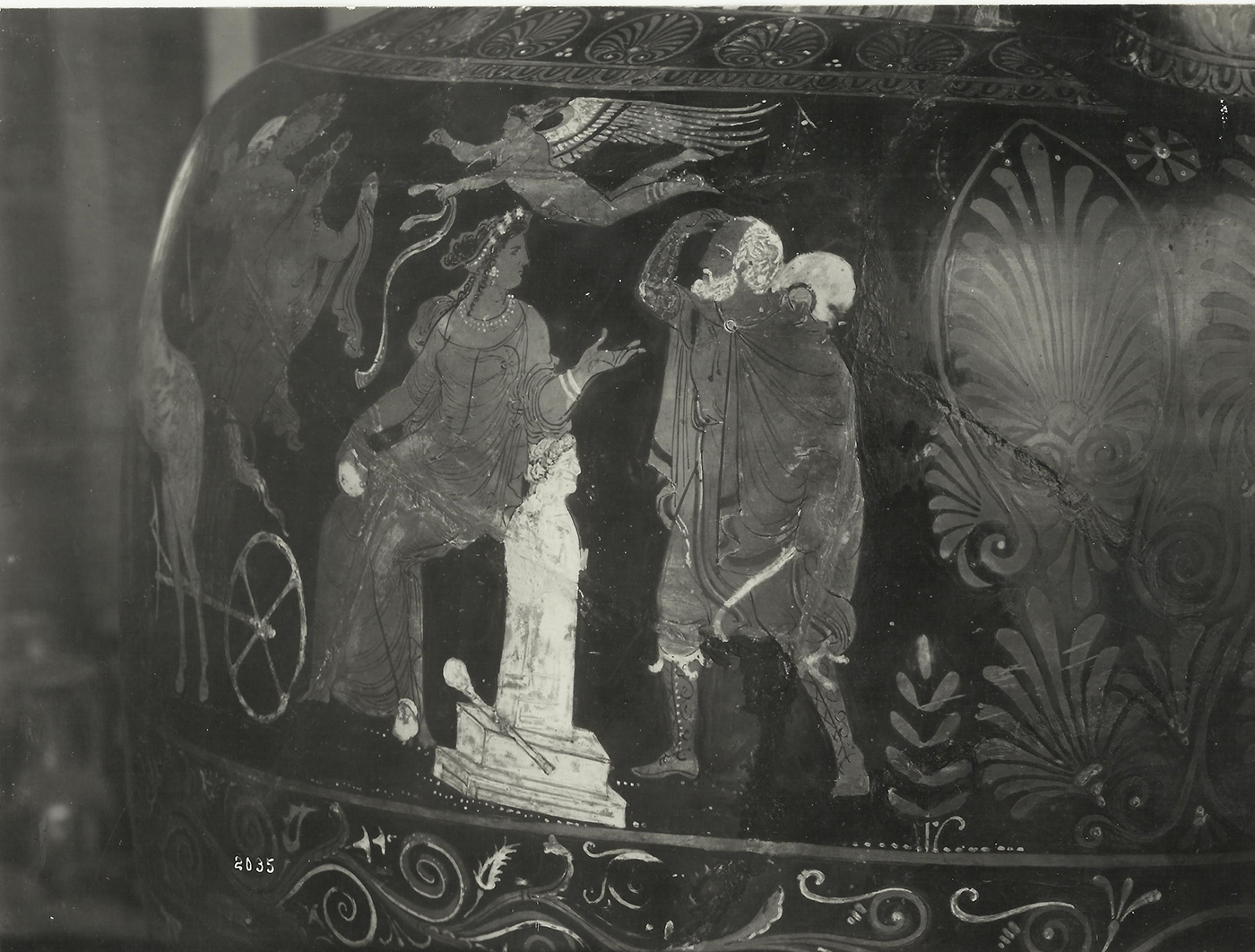
The Darius Painter, active between 340 and 320 BC, is an important Apulian ceramist, recognized as one of the most significant representatives of the end of the Ornate Style in red-figure vase painting of Magna Graecia. His name derives from a famous volute krater, the Darius Vase, found in 1851 in a Daunian hypogeum area in Canosa di Puglia and currently exhibited in the National Archaeological Museum of Naples.
The works of the Darius Painter mainly comprise volute kraters, amphorae and loutrophoroi of large dimensions, characterised by a wide variety of subjects. Recurring themes of his creations include theatrical scenes, especially inspired by the tragedies of Euripides, and other mythological narratives, some of which are not documented in ancient texts, but known exclusively from his vases. In addition, on other forms of vessels, such as pelikes, he depicted wedding scenes, erotic figures, women and motifs related to the cult of Dionysus. Unlike other contemporary painters, his representations of funerary scenes, such as on naiskos vases, are relatively rare and, when present, appear mainly on the secondary face of the vase. Furthermore, some of his works, such as the Darius Vase, feature historical subjects.

One of the most distinctive features of his work is his frequent use of inscriptions. He did not limit himself to labelling individual figures, but also used inscriptions to provide context to scenes, turning them into veritable “titles”. These inscriptions are often arranged to fill the available space on vases, creating elaborate and layered compositions, sometimes enriched by ornamental friezes. The Darius Painter is considered an innovator in vase painting, fully exploiting the expressive potential of large formats. The artistic quality of his work is generally rated highly, particularly for his rendering of faces, which are often depicted in three-quarter perspective.

His activities probably took place in a large workshop at Taras, where he may have served as owner or master builder. There are many works which, although not directly attributable to him, are so similar in style that they can be considered products of his workshop. After his death, probably in the 3rd century, Apulian pottery underwent a rapid decline in quality. The Darius Painter followed in the footsteps of the Varrese Painter and his group, but managed to surpass their achievements. Among his contemporaries, the Perrone Painter and the Phrixos Painter are worthy of note, while his main stylistic successor was the Painter of the Underworld.
Some of his most significant works include the Darius Vase, the Amazonomachy Vase, an Apulian amphora preserved in Munich, a plate decorated with fish and a clay pot at the Antikensammlung in Berlin. His legacy remains fundamental to the understanding of Apulian ceramics and the artistic culture of the time.


















Leave a comment